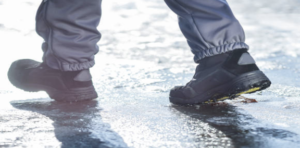OSHA is implementing a procedural change that was proposed originally during the Obama administration, then
shelved during the Trump administration, only to be revived during the Biden administration. The public will
now have access to the Form 300A illness and injury records that many companies already file electronically
with the agency. Although this information had been available to third parties under the Freedom of Information
Act (FOIA) for decades, this new process allows anyone to find it with just a few keystrokes.
This controversial change has been debated for years when an Obama led OSHA predicted that the fear of
public exposure to illness and injury recordables would “shame” or “embarrass” companies into providing safer
work environments. Opponents believed that this was an extreme measure that served no viable purpose and
would not improve worker safety. Although the current OSHA position regarding this issue makes no mention of
shaming or embarrassing, it does offer a rationale, stating that the expanded public access to establishment-specific,
case specific injury and illness data would allow employers, employees, potential employees, employee representatives,
customers, potential
customers, researchers, and the general public to make informed decisions about the workplace safety and
health at a given establishment, and this accessibility will ultimately result in the reduction of occupational
injuries and illnesses.
For new and existing account holders obligated to file Form 300A electronically with OSHA before March 2nd of
2023 and all following years, the agency now requires them to convert their Injury Tracking Application (ITA) to a
Login.gov account using their ITA email address. According to OSHA, by using the Login.gov account, the public
will have access to all participating government agency applications using just one sign on and password.
A complete explanation of the new policy (including an instructional video) may be found on the OSHA home
page: https://www.osha.gov/
Walk Softly and Wear Proper Shoes
Slips, trips, and falls are a serious problem in American workplaces that cause thousands of worker injuries each
year and, aside from the pain and suffering the employee experiences, staffing and operational disruptions may
develop that can cost their company lost time and money. Statics for 2020 provided by the Centers for Disease
Control and Prevention (CDC), OSHA, and the US Bureau of Labor Statistics (BLS) confirm just how significant a
problem these accidents have become. The statistics are listed below:
On average, they comprise thirty-seven percent (37%)
of all recordable injuries
Twenty-eight percent (28%) of workplace fatalities
Eighteen percent (18%) of the 1,176,340 time-lost
nonfatal injuries
On average, fifty workers deaths each year
Not surprisingly, OSHA states that loss of traction is the leading cause of these types of workplace accidents.
Other factors can contribute too, such as slippery patches of ice, gas, grease, or oil that are not identified on
floors. Employees who are hurrying or running while wearing unsuited or deteriorated shoes, can help cause a
slip, trip, or fall. Intangibles such as age-related balance problems, visual impairment, poor lighting…etc. also can
play a role in these scenarios.
What can employers do to help reduce these types of accidents? Choosing proper footwear for workers is key.
When purchasing safety shoes, employers traditionally have looked for “slip resistant” soles which is one of the
most important features to consider when selecting work shoes and boots. The fact that the manufacturer
normally has supplied this information may be reassuring to some prospective purchasers but is it reliable and
verifiable?
Generally, “slip resistant” shoes have rubber soles with a tread pattern designed to stay in contact with wet,
oily, and slippery surfaces but slip resistance effectiveness typically has been based exclusively on the
manufacturers’ unchallenged assurances. No unbiased third-party authority applying performance standards
had been involved with the process until recently.
In July of 2021, however, the American Society for Testing and Materials (ASTM) published a new standard
(ASTM 3445-21) that safety shoe customers may use to help them select footwear that had been tested which
also includes a new labeling system. Employers should consider buying safety shoes labelled F3445-21 SR,
meaning that the product was certified by ASTM using the F2913-19 test protocol.
Providing ASTM certified footwear, however, is not a substitute for monitoring other factors that influence
traction control such as keeping shoe soles and heels clean and free of any objects or substances that may
reduce the effectiveness of its anti-slip design. Also, employees must be trained to continuously evaluate floor
surfaces in their work environments to identify any hazardous conditions that must be eliminated before work
may begin or continue.
Equipping employees with ASTM approved slip resistant footwear combined with diligent housekeeping
practices will help reduce slip, trip, and fall incidents on the company premises, fostering a safer work
environment with fewer time-off injuries and operational disruptions.
Please direct any questions or concerns to:
The Safety Division at Hamond Safety Management
Anthony Vacchio, avacchio@hamondgroup.com 516-762-4224

